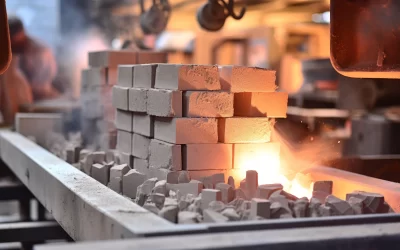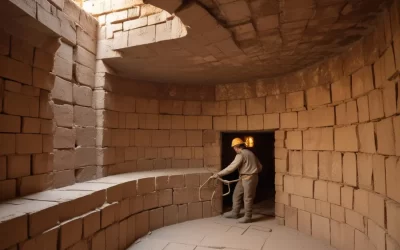When it comes to securing furnaces, kilns, and reactors, the proper understanding of refractory work procedures is paramount for ensuring optimal results. By delving into the key elements of refractory work, we aim to empower you with the knowledge necessary to make informed decisions for your facility’s maintenance and efficiency.
To get rid of a daunting task, keep your eyes rolled till the bottom… where you’ll find a systematic approach. As a leading refractory Industry in India, we have provided complete guidelines for refractory work procedures. So without further ado let’s dive in!
A Guide to Refractory Work Procedures
The main purpose of refractory materials is to endure high temperatures and extreme conditions. Refractory work refers to the procedures involved in the installation, maintenance, and repair of refractory linings in industrial equipment. The following is an outline that will guide you through the crucial aspects of refractory work procedures.
Prep Like a Pro
Before you even think about getting your hands dirty, take a moment to prep your workspace. Clear away any clutter, sweep up the dust, and make sure you’ve got plenty of ventilation. Refractory work can get messy, so having a clean and well-ventilated area and top-notch equipment in hand to work will make the refractory work process much smoother.
Situation Assessment
Take a close look at the area you’ll be working on and identify any damage or deterioration. Are there cracks that need patching? Is the lining worn down in certain spots? Understanding the extent of the damage will help you plan your approach and determine the best course of action.
Choose Your Materials Wisely
Refractory materials come in a variety of forms, from castable, bricks to mortars and coatings. Consider factors such as temperature resistance, chemical compatibility, and application method when choosing your materials. If you find yourself clueless here, reach out to the best refractory manufacturer in India to help you find suitable material for your application.
Final Stage
Whether you’re pouring, troweling, or gunning, take care to achieve uniform coverage and thickness throughout. Once mixed to the appropriate consistency, apply the material evenly to the prepared surface using the appropriate tools.
Once the refractory material is applied, it’s important to allow sufficient time for curing and drying. This process may vary depending on the type of material used, as well as environmental factors such as temperature and humidity. Follow refractory manufacturers for better results.
How to Choose the Right Refractory Processing Method?
Selecting the appropriate refractory processing method is crucial to ensure optimal performance and longevity of refractory linings in various industrial applications. Here’s a checklist to help you choose the right refractory processing method.
→ First off, know what you’re dealing with. Understand the job you need the refractory for and what it’s up against.
→ Understand the properties of the refractory material being used, including its composition, thermal conductivity, density, and porosity.
→ Consider factors such as size, shape, and complexity of the refractory lining. They may influence the choice of processing method.
→ When selecting a refractory processing method, consider the constraints of both time and cost. A few refractory material processes could call for more effort and expertise.
→ Lastly, consider the environmental impact of the refractory processing method.
Last Verdict
In conclusion, selecting the right method for refractory work procedures is crucial to achieving optimal results. By considering factors such as the type of refractory material, the specific application, and the expertise of the personnel involved, one can ensure long-term performance.
As a leading refractory manufacturer in India, Ganeshas Refractory provides not only high-quality refractory materials but also the expertise to help you choose the finest refractory process for your unique requirements. Please contact a member of our team for more details.




